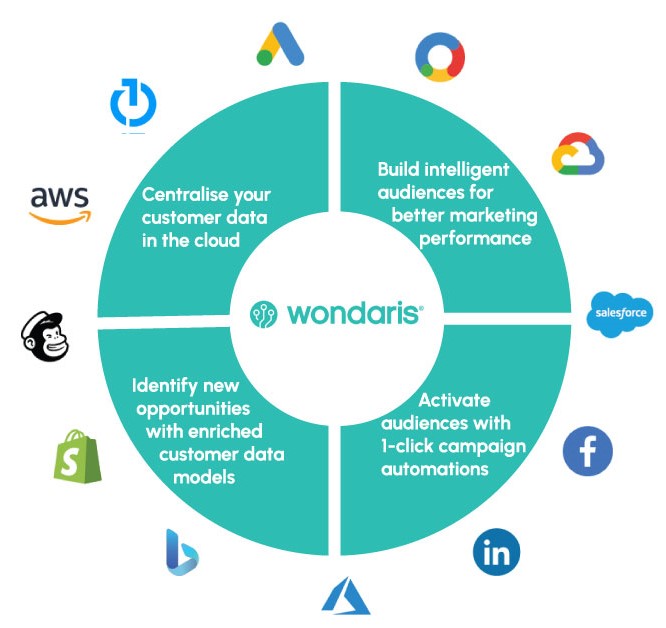In today’s competitive marketing landscape, acquiring new customers is an ongoing challenge.
But what happens after that initial purchase?
Focusing solely on acquisition can be a short-sighted strategy.
This is where Customer Lifetime Value (LTV) comes in.
Understanding Customer Lifetime Value (LTV)
Definition: What is LTV and how is it calculated?
Customer Lifetime Value (LTV) is a metric that estimates the total revenue a customer is expected to generate for your business throughout their relationship with you.
It considers factors like average purchase value, purchase frequency, and customer lifespan.
A common LTV formula is:
Average Order Value (AOV) x Purchase Frequency x Average Customer Lifespan
Importance of LTV: Why focusing solely on acquisition is short-sighted
While acquiring new customers is important, retaining existing ones is often more cost-effective.
According to the Harvard Business Review, it can cost five times* more to acquire a new customer than retain an existing one.
Focusing solely on acquisition metrics can lead to neglecting valuable customer segments and overlooking opportunities to increase revenue from existing customers and improve brand loyalty.
While complementary metrics such as Customer Retention Rate (CRR), Average Revenue Per User (ARPU), Churn Rate, and Net Promoter Score (NPS) are valuable for understanding various aspects of customer behaviour and satisfaction, they each have limitations that may hinder their effectiveness in identifying growth opportunities:
Customer Retention Rate (CRR):
Limitation: CRR measures the percentage of customers who continue to transact with a business over a specific period.
However, it doesn’t provide insights into the quality of those retained customers or their potential for increased spending.
For example, a high CRR may mask the fact that retained customers are making minimal purchases or aren’t engaged enough to explore additional offerings.
Average Revenue Per User (ARPU):
Limitation: ARPU focuses solely on the average revenue generated by each customer.
While it helps identify trends in spending behaviour, it may overlook variations within customer segments.
For instance, a high ARPU might be driven by a small group of high-spending customers, while the majority of customers contribute minimally to overall revenue.
Churn Rate:
Limitation: Churn Rate measures the percentage of customers who cease their relationship with a business within a given timeframe.
While it highlights customer attrition, it doesn’t provide insights into the reasons behind churn or the potential to win back lost customers.
Without understanding the root causes of churn, businesses may struggle to implement effective retention strategies.
Net Promoter Score (NPS):
Limitation: NPS gauges customer satisfaction and loyalty based on their likelihood to recommend a brand to others.
While a high NPS is desirable, it doesn’t necessarily translate to increased revenue or long-term growth.
Additionally, NPS doesn’t capture specific feedback or actionable insights that can drive improvements in products or services.
LTV: A Marketer’s Secret Weapon for Growth
LTV and Customer Segmentation: Identifying high-value customers
LTV enables marketers to segment their customer base, providing a solid foundation for conducting higher-quality analysis and identifying growth opportunities.
By analysing customer behaviour and purchase history, you can identify high-value customer segments who contribute significantly to your overall revenue.
This allows you to tailor marketing campaigns and loyalty programs to cater to their specific needs and preferences.
Strategies to Increase Customer Lifetime Value:
1. Fostering Customer Loyalty & Retention Programs:
- Create loyalty programs that reward repeat purchases and incentivise brand advocacy.
- Offer personalised recommendations and exclusive benefits to high-value customers.
- Prioritise excellent customer service to build trust and positive brand experiences.
2. Upselling & Cross-selling: Maximising customer value
- Recommend complementary products or services that enhance the customer’s initial purchase.
- Offer tiered pricing plans catering to different customer needs and budget points.
3. Personalised Marketing & Communication:
- Craft targeted marketing messages based on customer preferences and purchase history.
- Utilise email automation to nurture leads and encourage repeat purchases.
- Engage with customers on social media platforms and foster a sense of community.
Measuring the Impact of LTV-focused Strategies
Track key metrics like customer churn rate, repeat purchase rate, and average order value to measure the effectiveness of your LTV-focused strategies.
Unleashing the Power of AI for Effortless LTV Calculations
Traditionally, calculating Customer Lifetime Value (LTV) can be a time-consuming process.
But what if you could leverage cutting-edge AI to automate this process and gain deeper customer insights?
This is where XPON’s Wondaris platform shines.
Wondaris, your one-stop Audience Enrichment and Activation Platform, provides AI-powered LTV prediction models out-of-the-box.
This allows you to:
- Automate Data Analysis: AI algorithms can sift through vast amounts of customer data within Wondaris, uncovering hidden patterns and trends that influence customer behaviour. This eliminates the need for manual data manipulation and streamlines the LTV calculation process.
- Rapidly Identify High-Value Segments: With Wondaris, marketers can analyse past purchase behaviour to identify customer segments with the highest predicted LTV.
- Targeted Activation: Once high-value segments are identified in Wondaris, AI can personalise marketing campaigns and promotions to maximise engagement and ultimately, revenue. This targeted approach ensures you’re investing resources in the customers who will bring the most value to your business.
Conclusion: The Long Game Advantage
By focusing on LTV, marketers can shift their perspective from short-term customer acquisition to building long-term, sustainable growth.
Investing in customer retention strategies fosters brand loyalty, increases customer lifetime value, and ultimately leads to higher profits.
Luckily, AI can simplify the complexity of LTV calculations, with platforms like Wondaris, doing the heavy lifting.
By understanding customer value, marketers can allocate resources efficiently, personalise campaigns, and predict future customer behaviour.

